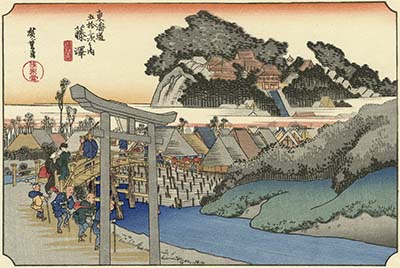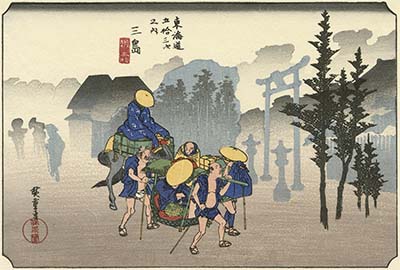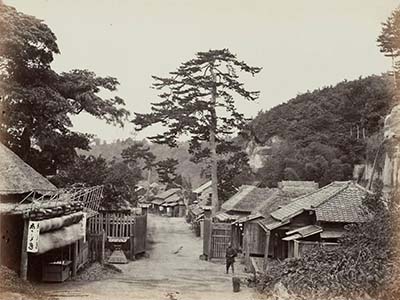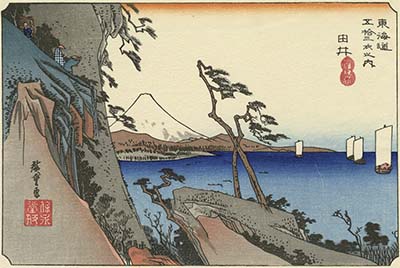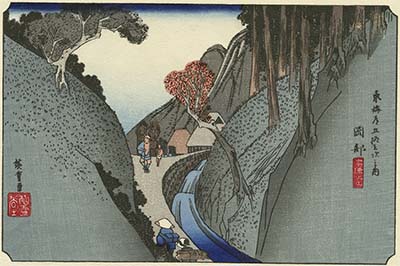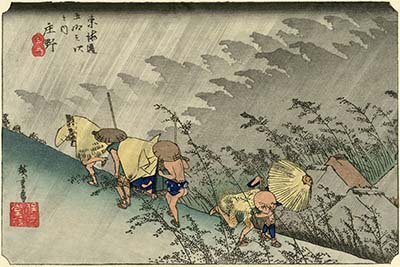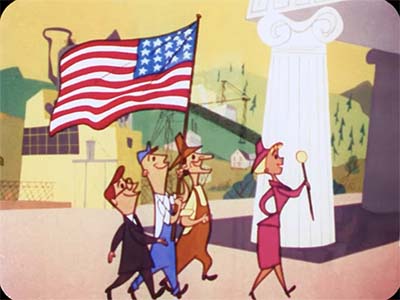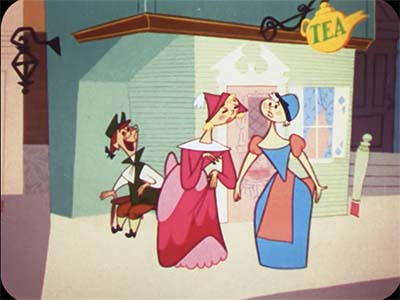People who aren’t members of Animation Resources don’t understand how comprehensive our Reference Packs are. Over the next couple of weeks, we will be posting what each section of our current RefPack looks like, starting today with the Featured section. If you are a member of Animation Resources, click on this post to go to the Members Only page. If you aren’t a member yet, today is the perfect time to join! Our current Reference Pack is one of our best yet, and General and Student Members get access to a special Bonus Archive with even more material from past Reference Packs.
What are you waiting for?![]()
JOIN TODAY!
https://animationresources.org/membership/levels/

Every other month, Animation Resources shares a new Reference Pack with its members. They consist of an e-book packed with high resolution scans and video downloads set up for still frame study. Make sure you download the Reference Pack before it’s updated. When it’s gone, it’s gone!
JOIN TODAY To Access Members Only Content
PDF E-BOOK
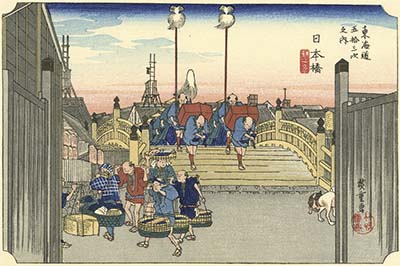
53 Stations Of The Tokaido Road
![]()
Utagawa Hiroshige
Download this article

![]() In 1603 the then ruler of Japan, Tokugawa Iyeyasu established Edo (which today is known as Tokyo) as the seat of the Shogunate, and built a series of roads radiating outward to the rest of Japan. As we explained in a previous Reference Pack, every year all of the Daimyo, or regional princes, were required to relocate from their territories to Edo, carrying all of their families, courtiers and warriors with them. When these processions traversed the road, they might number as many as 20,000 people.
In 1603 the then ruler of Japan, Tokugawa Iyeyasu established Edo (which today is known as Tokyo) as the seat of the Shogunate, and built a series of roads radiating outward to the rest of Japan. As we explained in a previous Reference Pack, every year all of the Daimyo, or regional princes, were required to relocate from their territories to Edo, carrying all of their families, courtiers and warriors with them. When these processions traversed the road, they might number as many as 20,000 people.
The greatest of these roads was the Tokaido, which reached 320 miles from Edo to Kyoto, and was divided into fifty-three stations. These stations were spaced about a half day’s travels apart. It could take as little as two weeks to go from one end of the road to the other. But bad weather could extend it to a month, requiring travelers to spend several days at a single station until the river went down or the rain stopped. At these 53 stations were horse stables, porters for hire, lodging houses, restaurants, religious shrines and brothels which were maintained by the local governors to serve the Daimyo as they passed through. For the rest of the year, these post houses served citizen travelers who had business in other parts of the country.
The Tokaido Road teemed with travelers of all kinds. In contrast with the pothole studded muddy roads in Europe at the time, it was well maintained with a smooth gravel surface that made travel easy. The local officials would oversee the operation of the stations and ensure the travelers’ safety. Each night the gates of the town were closed and no one could leave or enter. Crime was relatively rare because it was brutally punished. The bodies of thieves and murderers were displayed alongside the road on the approach to each town to discourage criminals from stopping there. Along the road were arches which marked out the distances. By counting these markers, a courier could calculate charges for delivering packages and correspondence.
All classes of people travelled the roads, from the Emperor to regional governors to shogun warriors to messengers to common people. Each type of traveler would have a different mode of conveyance. High ranking officials would travel in enclosed tents carried on poles called norimoto. You could tell the rank of the traveller by the number of carriers. The norimoto of a nobleman would be very long, borne by a dozen men, while a merchant might just have two porters assisting him. Differences in class were most visible at river crossings. Those of high rank would be carried on covered palanquins, keeping them high and dry; while commoners had to ford the river on foot, carrying their belongings on their heads. At a couple of points in the trip, there were boatmen to carry groups of people across larger bodies of water. By law, only samurai warriors were allowed to ride horses, so common people could only use them as pack animals. But rules were bent and commoners were allowed to ride if the horse was led by the bridle by a porter on foot.
The system of roads in Japan was the subject of a lot of travel literature in the Edo period. Many illustrated guides offered views of the various stations and advice for travelers. But these illustrations were mostly in books, not the subject of decorative prints. Around 1830, both Hokusai and Hiroshige began producing series of woodblock prints, known in Japan as ukiyo-e, depicting landscapes, rather than images of kabuki actors, courtesans and mythology, which had been the principle popular subjects up to that point. Hokusai’s first series was titled Thirty-Six Views of Mt Fuji, and it included one of the most iconic images in Japanese art, “The Great Wave Off Kanagawa”. But even more famous is Hiroshige’s series titled Fifty-Three Stations Of The Tokaido. We are sharing a complete set of this masterpiece of Asian art with you in this Reference Pack.
The traditional story says that in 1832, Hiroshige accompanied an official delegation traveling the Tokaido to deliver horses as a gift from the shogun to the Imperial court. Along the way he made sketches, and when he got home to Edo, he immediately began work on a series of prints depicting each of the stages of the journey, along with two additional prints for the beginning and end of the road. However, historians doubt that he actually visited all of the stations he depicted. The fifteenth print in the series depicts a village named Kanbara in the snow. But that part of Japan rarely has snowfall, while a town with a similar name in the mountains does. It is thought that he might have cribbed the elements of his design from a travel guide, not realizing it was a different place. Other clues indicate that the places depicted might have been more in Hiroshige’s imagination than in any specific part of the Tokaido Road.
It is important to remember that the purpose of ukiyo-e was not to literally represent what a place looked like, but rather to convey the feeling and memory of actually being there. Colors represented specific moods and times of day. The tipped perspective indicated distances all at once on the page, with near objects at the bottom of the print, and distant ones at the top. Human figures represented the range of personalities one might find at that place. Geographic features and foliage were exaggerated to indicate their relationship to the landscape. The way I think about it is like maps of cities that have places of interest illustrated with cartoons of people doing things at amusement parks, museums or theaters. The map has two layers to it… one layer cartographical and the other layer a comment on what people do at that location. Japanese landscapes have an illustrative layer and a poetic one.
Andrew Kozlowski said it well when he wrote in an article on the Tokaido prints, “When I look at these prints what I see is a young man who for the first time is experiencing a world outside of everything he has ever known, whether done through experience or imagination, but most likely some combination of both. He wants it to be filled with beauty, and he moves mountains and rivers to accomplish this, he turns the sun and moon on and off at will, he brings the wind and snow and rain like movie props. Hiroshige drops us into the scene not at the point at which we actually experience it, but the one from which it is best experienced.”
The series was initially published simultaneously by two different publishers, Hoeido and Senkakudo. Each print sold for between 12 and 16 copper coins, which was roughly the cost of a bowl of soup at the time. It was a huge success. The first group of blocks wore out and were followed by another edition, and another. The Fifty-Three Stations continues to be published using the original woodblock printing method to the current day. Vincent Van Gogh and Frank Lloyd Wright were both collectors of Hiroshige’s prints from this series. Unquestionably, Hiroshige is the most successful and popular designer of ukiyo-e of all time, and The Fifty-Three Stations Of The Tokaido is his masterpiece.
Animation Resources was able to obtain a replica of the original Hoeido edition of this important work produced around 1972 using the same woodblock carving and hand printing technique as in Hiroshige’s time. It’s important to note that Western art’s concept of authenticity doesn’t apply to ukiyo-e. The artist responsible for the design provided a line drawing, but had little to do with the way the carver handled textures and details; and the carver would have very little interaction with the printmaker who would mix the colors by eye for each set of prints. The woodblocks themselves wore out after a couple thousand impressions, so they were recarved and recolored, often by different craftsmen each time. As blocks wore out, they generally wouldn’t be replaced all at once. They would be recarved and substituted when needed, so one edition might have color blocks from a more than one carver or edition. Hand printing is inconsistent. Some impressions are lighter or darker than others. The variation between different copies of the same print can be huge.
Sorting all this out to determine what the “original” prints looked like is impossible. The relationship between a designer, carver and printmaker is a lot like the relationship between a composer, conductor and orchestra. Each one adds something of themselves to the work. Just like a Beethoven symphony is invariably by Beethoven, each performance of it brings different aspects of the music to the fore. A conductor may vary tempi to create a specific emotion, and the string section may have a unique texture, exclusive to that orchestra. Likewise, a carver might have his own technique of handling skies and a printer might favor more gradual transitions between colors. If you compare two prints of the same image, you might find dozens of small differences between them.
Mistakes can creep in as well. One famous mistake is in the 10th Station of the Tokaido Road series. A section of the mountainside was left off all the color blocks of an early edition, so it was pure white. The print with this error was used as the model for decades and decades. Carvers and printers dutifully repeated the same error in tens of thousands of prints. The carver of the edition Animation Resources is sharing is one of the few who corrected that particular error. On the 53rd Station, some printmakers color it as a night scene and others as daylight. There is no “authentic version” of any ukiyo-e print. Each edition must be judged on its own merits.
These are not cartoons, designed to be flipped through quickly. The images look deceptively simple at first, but closer examination will reveal amazing details that make the pictures come to life. There is an unearthly perfection to the compositions. They all lead your eye around the image in interesting ways. When you look at these images, take your time to fully absorb them. You’ll be richly rewarded. Each one is a world unto itself.
Another thing to consider as you wander down the road with Hiroshige is that Japanese people read images right to left, not left to right. That might seem to not matter, but it actually does matter a great deal with many of these compositions. Look, for instance at the tenth station. A Westerner sees Mt. Fuji first and works his way over to the travelers on the road. But a Japanese person would start with the people and move along further and further into the distance in layers as his eye goes from right to left, settling finally on the iconic view of Mt. Fuji. This reading reflects the relationship of the people to the vast panorama much better than reading it the other way around.
Woodblock prints are printed on special handmade paper, and the surface of the medium is as much a part of the texture of the image as the colors printed on it. Some people insist that prints should be photographed with the light source coming strongly from one direction to highlight the tooth of the paper. It’s difficult with a digital scan to reproduce that look and feel, but the team at Animation Resources has made an effort to calibrate color settings, digitize at a high resolution, and avoid any digital artifacts from creeping in. We hope it gives you an idea of why ukiyo-e is so special.
Frank Lloyd Wright called Hiroshige’s Tokaido prints “the most valuable contributions ever made to the art of the world.” We’re proud to be able to share them with you, so you can add them to your own digital library.
Adobe PDF File / 124 Pages / 456 MB Download
JOIN TODAY To Access Members Only Content
It’s Everybody’s Business
![]()
Carl Urbano / John Sutherland Productions / 1954
John Sutherland was born in North Dakota, the son of a bank president. Droughts caused local ranchers to default on their loans and the banks managed by Sutherland’s father went bankrupt. His family relocated to California, where John enrolled in UCLA, studying political science and economics. Contacts at UCLA put him in contact with Walt Disney, who hired him to work as an assistant director, which was basically a production job. Later, Sutherland was moved to the story department, where he worked with the artists there to write dialogue and prepare recording scripts. He is said to have provided the voice for adult Bambi, but he got no credit for his voice work.
Sutherland left Disney on good terms shortly before the strike, and Disney recommended him to Darryl Zanuck, the head of 20th Century Fox. Zanuck sent him to Washington D.C. to serve as a director and producer of military training films. For a while, he worked on both coasts, producing films for the Army and Navy, while developing feature projects in Hollywood. But when the United States entered the war, the Department of Defense guaranteed him enough work for him to produce films full time for the government.
In 1945, Sutherland opened his own studio, producing animated short films for United Artists as well as industrial and propaganda films. Between 1945 and the mid-1960s, his studio averaged about twenty films a year, many of them financed by a grant from Alfred P. Sloan, the head of General Motors. These films promoted the values of capitalism and the American way of life. Other films were financed by large corporations, like General Electric and U.S. Steel.
Sutherland’s films had high production values thanks to the top artists that worked under him. Carl Urbano directed the film we are sharing here, and Bill Scott and George Gordon were the story artists. The animators on this short include Emery Hawkins, Abe Levitow and Bill Melendez, and the production designer was Maurice Noble. The music is by Les Baxter and Eugene Poddany. That’s a staff that would be the envy of any major animation studio.
In the past, Animation Resources has shared quite a few industrial films by Sutherland as well as Jam Handy, Paul Fennell and UPA. These films were intended to be shown to a specific audience at a particular place and time. They weren’t intended to be saved and re-distributed like entertainment films. Because of this, information on them is scarce, and many haven’t survived. We’re happy to be able to share this wonderful example with you in this Reference Pack.
MP4 Video File / SD / 19:47 / 303 MB Download
Many thanks to Steve Stanchfield from Thunderbean Animation for sharing this rare film with us.
JOIN TODAY To Access Members Only Content
Haven’t Joined Yet?
Check out this SAMPLE REFERENCE PACK! It will give you a taste of what Animation Resources members get to download every other month!

CLICK TO DOWNLOAD A Sample RefPack!
Animation Resources is a 501(c)(3) non-profit arts organization dedicated to providing self study material to the worldwide animation community. Every month, we sponsor a program of interest to artists, and every other month, we share a book and up to an hour of rare animation with our members. If you are a creative person interested in the fields of animation, cartooning or illustration, you should be a member of Animation Resources!
It’s easy to join Animation Resources. Just click on this link and you can sign up right now online…
JOIN TODAY!
https://animationresources.org/membership/levels/
![]()
![]() Animation Resources depends on your contributions to support its projects. Even if you can’t afford to join our group right now, please click the button below to donate whatever you can afford using PayPal.
Animation Resources depends on your contributions to support its projects. Even if you can’t afford to join our group right now, please click the button below to donate whatever you can afford using PayPal.















